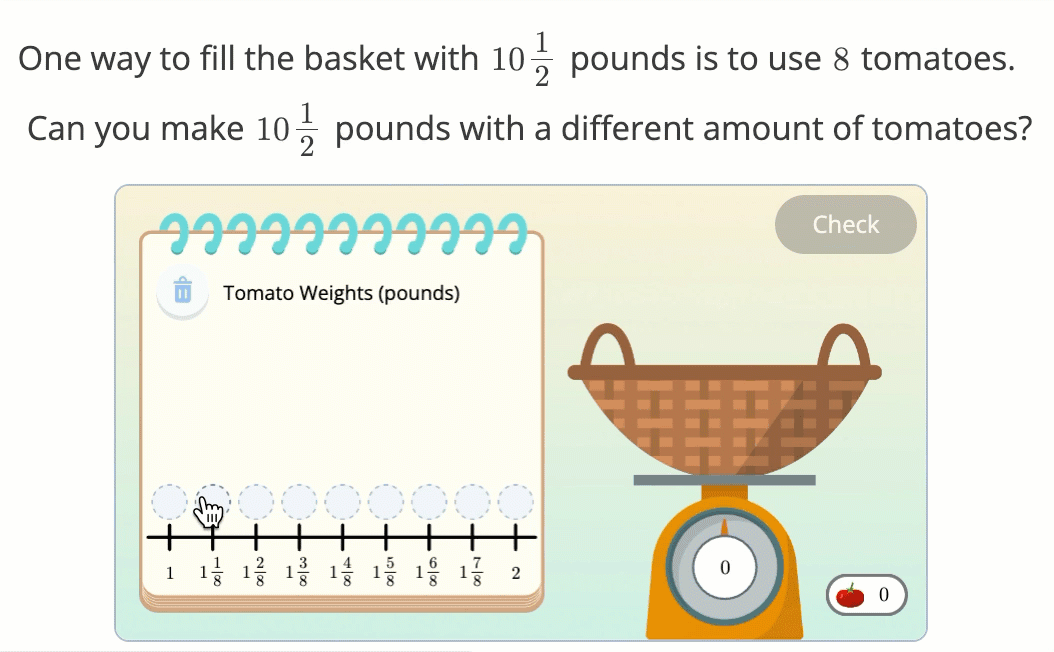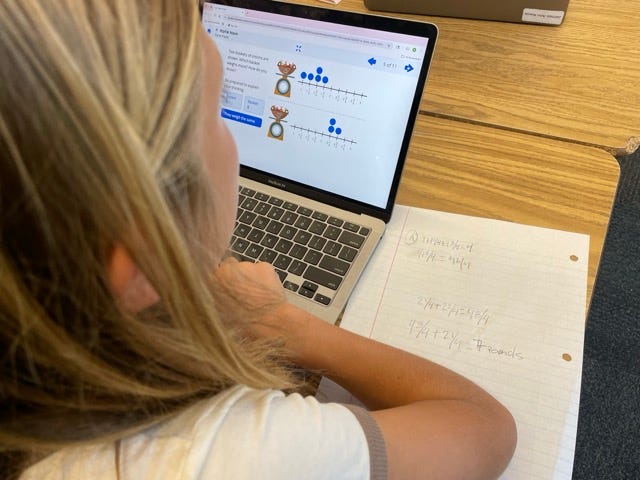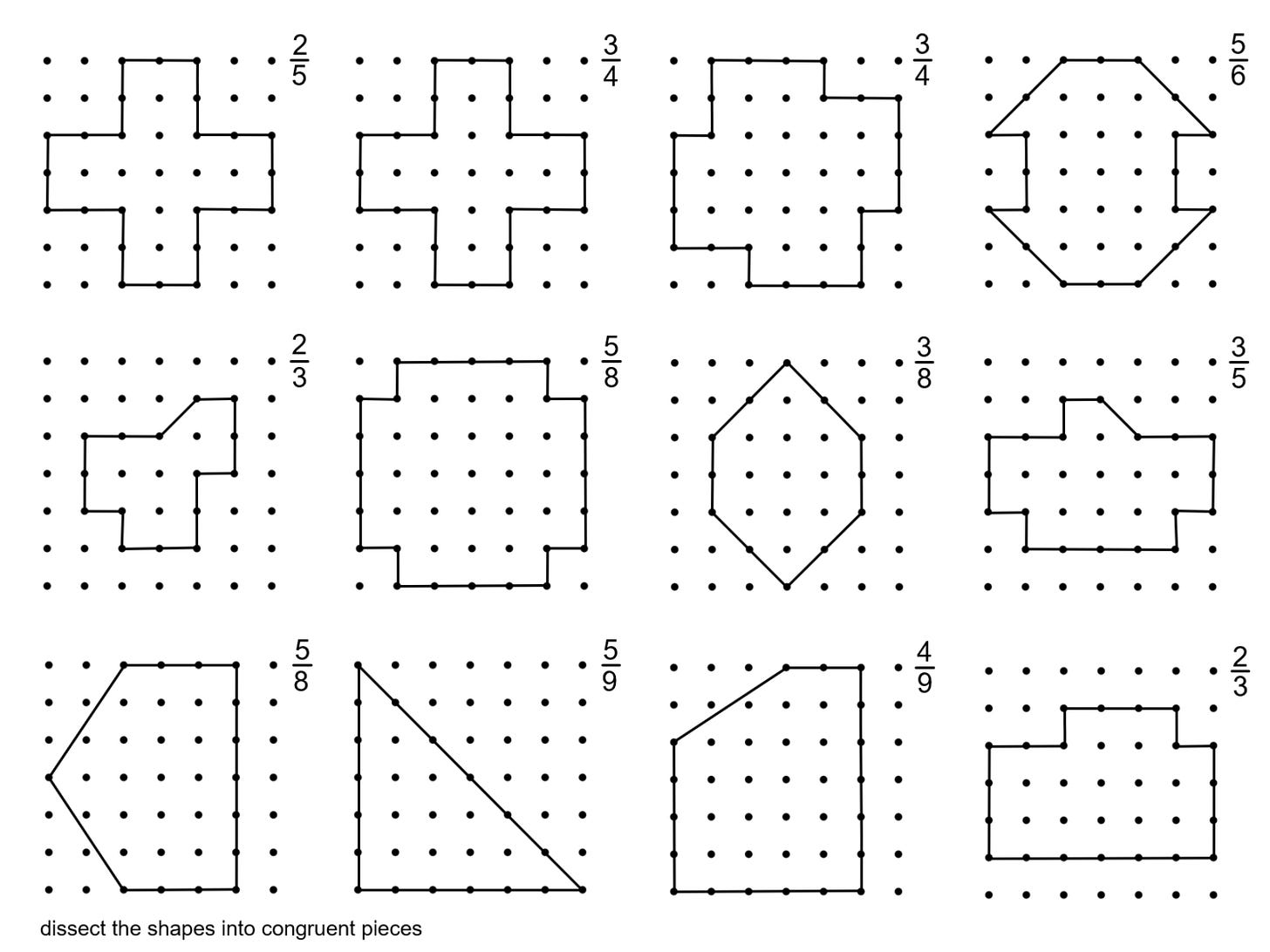I admire her classroom. The long side is all windows, looking out to lush greenery and tall trees. Everything is neat and tidy—like many elementary classrooms—but she definitely wins on the view. I can’t help but compare it to my 17-year, no-window middle school classroom that always smelled like Axe body spray… or just bleh.
I go with her request: “We’re working on fractions,” she tells me. It’s fourth grade, and I hope things go well.
We start with Amplify Desmos Math’s Farm Fresh, a Grade 4, Unit 3, Lesson 16: Solving Problems Involving Measurement Data on Line Plots.
At first, the students are each on their own device, which wasn’t the plan. I always want a 2-to-1 ratio so they’re talking. The teacher helps me remove half the laptops, and sure enough, the conversations pick up.
I absolutely love this progression of challenges, from one screen to the next:
Fill the basket with 8 pumpkins
Fill the basket with exactly 10 1/2 pounds of tomatoes
One way to fill the basket with 10 1/2 pounds is to use 8 tomatoes. Can you make 10 1/2 pounds with a different amount of tomatoes?
Compare two baskets given their line plots
Fill the basket with 5 carrots that weigh 3 pounds total
This basket of onions weighs 8 1/4 pounds. Add onion weights to the line plot so that it represents a basket with a weight of 12 pounds
This basket of carrots weighs 8 pounds. Remove carrot weights so that the basket weighs 3 pounds less
Then, for the Synthesis question:
One student explains, “I added the whole numbers—1 plus 2 is 3—then ¾ plus ¼ is 1, so 3 plus 1 is 4. And there are 3 sets of them, so 4 times 3 is 12.”
We move on to this handout from Don Steward, where each dot paper shape asks students to shade in a certain fraction.
We complete the first one together (top left). There’s more than one way to shade in 1/5 of this figure. Then, as students continue the handout with their partners, the class is buzzing with ideas. They realize they need to check their work—not just by looking, but by counting the total area and finding the fraction.
Then I hear one student exclaim, “I cracked the strategy!”
I run over to check it out. She’s working on shading 2/3 of the shape.
Mind you, the shape has an area of 10 1/2—so dividing that by 3 is no small feat!
Later, she explains her thinking again to the whole class. The excitement (and pride!) in her voice is nothing short of a triumphant discovery.








Every math teacher should have this on their play list. Excellent.